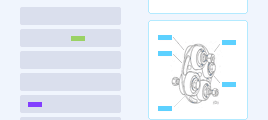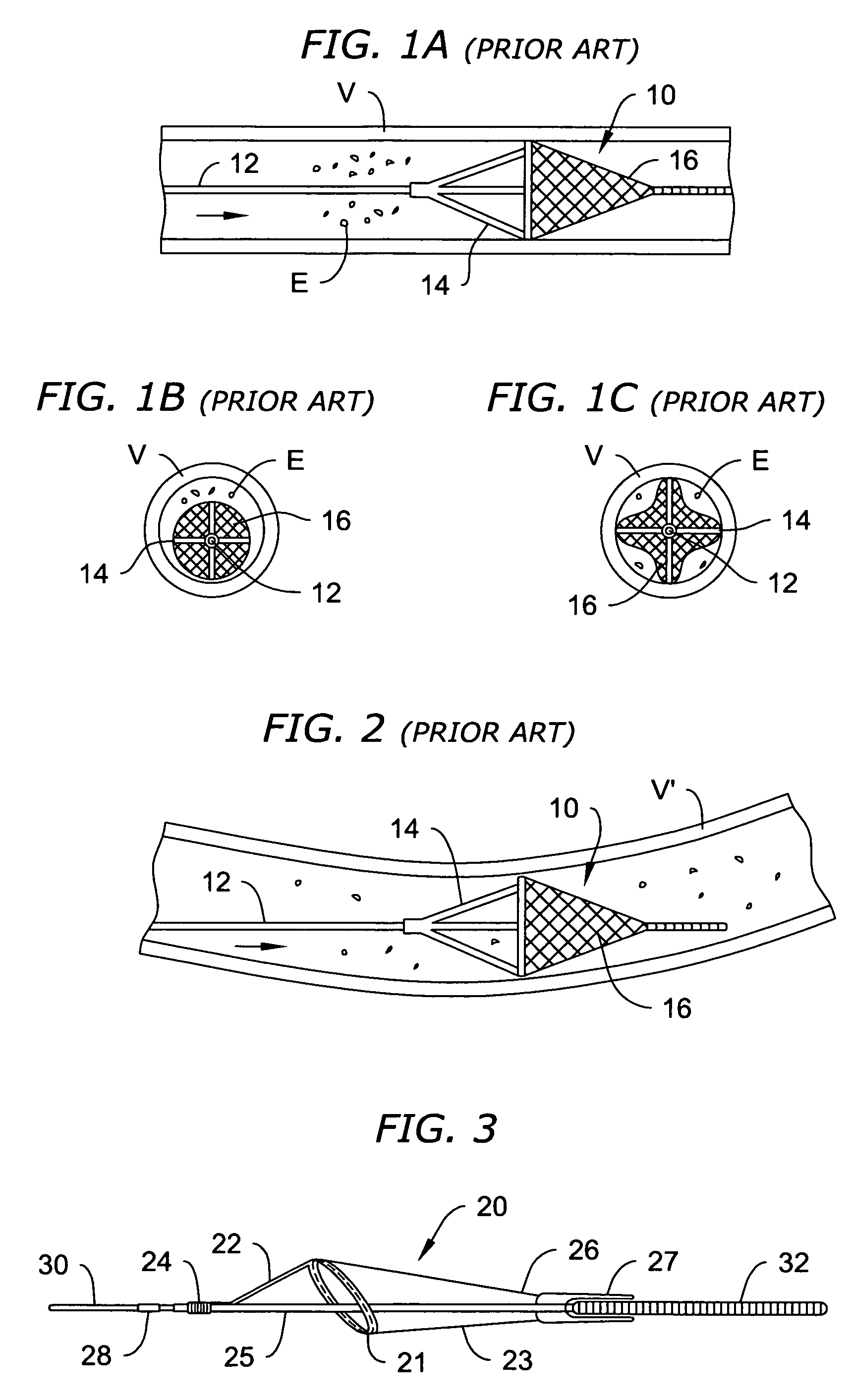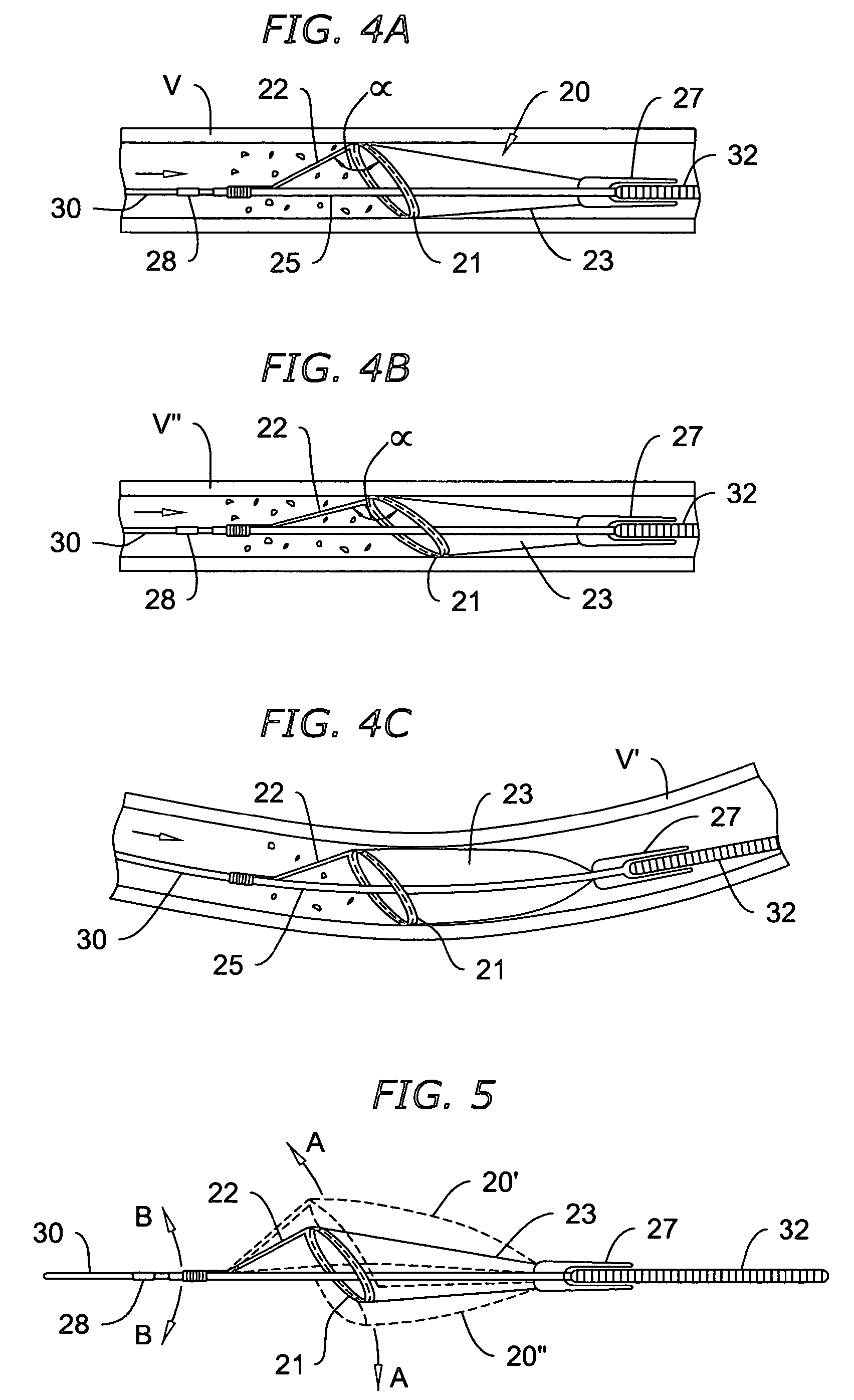This dislodged material, known as emboli, enters the bloodstream, and may be large enough to occlude smaller downstream vessels, potentially blocking
blood flow to tissue.
The resulting
ischemia poses a serious
threat to the health or life of a patient if the blockage occurs in critical tissue, such as the heart, lungs, or brain.
The deployment of stents and
stent-grafts to treat
vascular disease, such as aneurysms, also involves introduction of foreign objects into the bloodstream, and also may result in the formation of clots or release of emboli.
Such particulate matter, if released into the bloodstream, also may cause
infarction or
stroke.
Furthermore, interventional procedures may generate
foreign bodies that are left within a patient's bloodstream, thereby endangering the life of the patient.
A drawback of such previously known systems, however, is that
occlusion of antegrade flow through the vessel may result in damage to the tissue normally fed by the blocked vessel.
One
disadvantage of radially expandable filter systems such as described in the foregoing patents is the relative complexity of the devices, which typically include several parts.
Connecting more than a minimal number of such parts to a guide wire generally increases delivery complications.
Consequently, it may be difficult or impossible to use such devices in small
diameter vessels, such as are commonly found in the carotid
artery and cerebral vasculature.
Moreover, such filter devices are generally incapable of preventing material from escaping from the filter during the process of collapsing the filter for removal.
One
disadvantage of such systems is that the filters have only a limited range of operating sizes.
In this case, because a
blood pressure pulse can cause local swelling of the
vessel diameter, the pressure pulse can cause the vessel to momentarily become lifted off the perimeter of the filter, thereby permitting emboli to bypass the filter.
While the
filter system described in the foregoing International Publication reduces the number of components used to deploy the cone-shaped basket, as compared to the umbrella-type filter elements described hereinabove, it too has drawbacks.
One such drawback is that because the hoop is fixed directly to the guide wire, the cone-shaped basket may not be fully deployable in a tortuous vessel.
This problem is expected to arise, for example, where the resistance of the elongated member to bend to accommodate the
tortuosity of the vessel causes the hoop and basket to be lifted away from the vessel wall, thereby providing a path for emboli-laden blood to bypass the filter.
Moreover, because the hoop in the aforementioned reference is directly fastened to the elongated member, there is also a risk that the basket will collapse or become wound around the elongated member due to twisting of the elongated member, e.g., during transluminal
insertion of the filter, or during manipulation of the proximal end of the elongated member during
insertion or withdrawal of interventional devices along the elongated member.
Furthermore, the method for flexibly attaching the filter hoop to the elongated member poses additional challenges.
As discussed in the foregoing, if the filter is rigidly affixed directly to the elongated member, then the maneuverability required in accommodating tortuous vessels is compromised.
Also, if the filter
assembly is not properly attached to the elongated member, then the filter may become disengaged, thereby posing additional risks.
 Login to View More
Login to View More  Login to View More
Login to View More 


